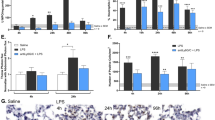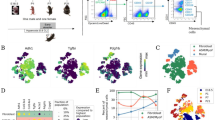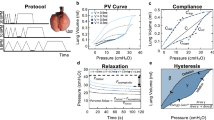Abstract
Reactive oxygen species are regarded as a possible cause of many diseases. However, there are few reports offering in vivo and in situ proof of the direct involvement of reactive oxygen species in the pathogenesis of disease. In the present study, the luciferin derivative 2-methyl-6-[4-methoxyphenyl]-3,7-dihydroimidazo [1,2-α] pyrazin-3-one (MCLA) was used to investigate the amount of reactive oxygen species produced during resuscitation after asphyxiation load in newborn piglets. The animals were first asphyxiated by stopping respiration for 4 min, and then resuscitated using 100% oxygen. When physiologic saline solution was administered, lung surface chemiluminescence had a mean value of 2, whereas with MCLA, a maximum luminescence of 580 was seen, demonstrating the possibility of measuring reactive oxygen species in vivo and in situ using MCLA. In a group in which resuscitation after acute asphyxiation was performed with 21% oxygen, the relative maximum lung surface chemiluminescence was 59.5 ± 39, whereas that for a group in which resuscitation was performed using 100% oxygen had a significantly higher value of 186.1 ± 72.5. Consequently, ventilation and especially resuscitation by 100% oxygen may represent a potential danger.
Similar content being viewed by others
Log in or create a free account to read this content
Gain free access to this article, as well as selected content from this journal and more on nature.com
or
Abbreviations
- MCLA:
-
2-methyl- 6-[4-methoxyphenyl]-3,7-dihydroimidazo [1,2-α] pyrazin-3-one
- LSC:
-
lung surface chemiluminescence
- SOD:
-
superoxide dismutase
References
Saugstad OD 1997 Bronchopulmonary dysplasia and oxidative stress: are we closer to understanding of the pathogenesis of BPD?. Acta Pediatr 87: 1277–1282.
Nycyk JA, Drury JA, Cooke RWI 1998 Breath pentane as a marker for lipid peroxidation and adverse outcome in preterm infants. Arch Dis Child 79: F67–F69.
Towicki PT, Nankervis CA 1994 The role of the circulation in the pathogenesis of necrotizing enterocolitis. Clin Perinatol 21: 219–234.
Nishida A, Kimura H, Nakano M, Goto T 1989 A sensitive and specific chemiluminescence method for estimating the ability of human granulocytes and monocytes to generate O2−. Clin Chim Acta 179: 177–182.
Nishida A 1990 Assay for the ability of granulocytes to generate superoxide anions. In: Nakano M, Yoshikawa T (eds) Active Oxygen and Chemiluminescence. Nihon Igakkann, Tokyo, 107–112.
Takahashi A, Nakano M, Mashiko S, Inaba H 1990 The first observation of O2− generation in in situ lungs of rats treated with drugs to induce experimental acute respiratory distress syndrome. FEBS Lett 261: 369–372.
Ushiroda S, Maruyama Y, Nakano M 1997 Continuous detection of superoxide in situ during ischemia and reperfusion in the rabbit heart. Jpn Heart J 38: 91–105.
Kishimoto W, Nakao A, Nakano M, Takahashi A, Inaba H, Takagi H 1995 Detection of superoxide free radicals in rats with acute pancreatitis. Pancreas 11: 122–126.
Saito D, Kadota T, Okada Y, Masuda Y, Ohno H, Inoue M 1995 Direct evidence for the occurrence of superoxide radicals in the small intestine of the burned rat. Am J Emerg Med 13: 37–40.
Wada K, Saniabadi AR, Umemura K, Nakano M, Ito T, Nakashima M 1995 Direct measurement of superoxide-dependent chemiluminescence from rat skin following UV-dependent fluoroquinolone-induced dermatitis. Free Radic Biol Med 18: 923–927.
Arai H, Kogure K 1987 Brain ischemia and active oxygen. In: Yagi K, Nakano M (eds) Active Oxygen. Ishiyakusyuppan, Tokyo, 259–274.
Nakamura T, Nishida A 1993 The ability of neutrophils from asphyxiated infants to generate superoxide anions (O2−). Acta Neonat Jpn 29: 555–562.
Nakamura T, Nishida A 1992 Changes of the ability of neutrophils from neonates with perinatal infection to generate superoxide anions (O2−). J Jpn Soc Premature Newborn Med 4: 283–288.
Nishida A, Nakamura T, Takahashi A 1993 Neutrophil priming effects on superoxide anion production activity. Jpn J Infect 13: 537–540.
Nishida A, Kimura H, Sugioka K, Nakano M 1990 The ability of granulocytes to generate superoxide anions and hypochlorite during phagocytosis: comparison of neonatal granulocytes with adult granulocytes. Biol Neonate 58: 145–151.
Tanswell AK, Freeman BA 1984 Pulmonary antioxidant enzyme maturation in the fetal and neonatal rat. Pediatr Res 18: 584–587.
Keeney SE, Cress SE, Brown SE, Bidani A 1992 The effect of hyperoxic exposure on antioxidant enzyme activities of alveolar type II cells in neonatal and adult rats. Pediatr Res 31: 441–444.
Frank L, Sosenko IRS 1991 Failure of premature rabbits to increase antioxidant enzymes during hyperoxic exposure: increased susceptibility to pulmonary oxygen toxicity compared with term rabbits. Pediatr Res 29: 292–296.
Onishi S, Itoh S, Isobe K, Imai T, Kondo M, Fukuzaki R, Nishida A 1992 Adaptive development of oxygen metabolism. Year Book Jpn Soc Perinatol 10: 59–77.
Acknowledgements
The authors thank Dr. Minoru Nakano of the Japan Antibody Research Center and Dr. Akira Nishida of the Hachiouji Prefectural Pediatrics Hospital Neonatal Unit for their many helpful suggestions throughout the course of the study.
Author information
Authors and Affiliations
Additional information
Supported by research grant 03454266 from the Ministry of Education of Japan.
Rights and permissions
About this article
Cite this article
Kondo, M., Itoh, S., Isobe, K. et al. Chemiluminescence because of the Production of Reactive Oxygen Species in the Lungs of Newborn Piglets during Resuscitation Periods after Asphyxiation Load. Pediatr Res 47, 524–527 (2000). https://doi.org/10.1203/00006450-200004000-00018
Received:
Accepted:
Issue date:
DOI: https://doi.org/10.1203/00006450-200004000-00018
This article is cited by
-
Short-term perinatal oxygen exposure may impair lung development in adult mice
Biological Research (2020)
-
Transcriptome profiling of the newborn mouse lung after hypoxia and reoxygenation: hyperoxic reoxygenation affects mTOR signaling pathway, DNA repair, and JNK-pathway regulation
Pediatric Research (2013)
-
Effect of Hyperoxia on Cortical Neuronal Nuclear Function and Programmed Cell Death Mechanisms
Neurochemical Research (2007)
-
Oxygen for Newborns: How Much is Too Much?
Journal of Perinatology (2005)



